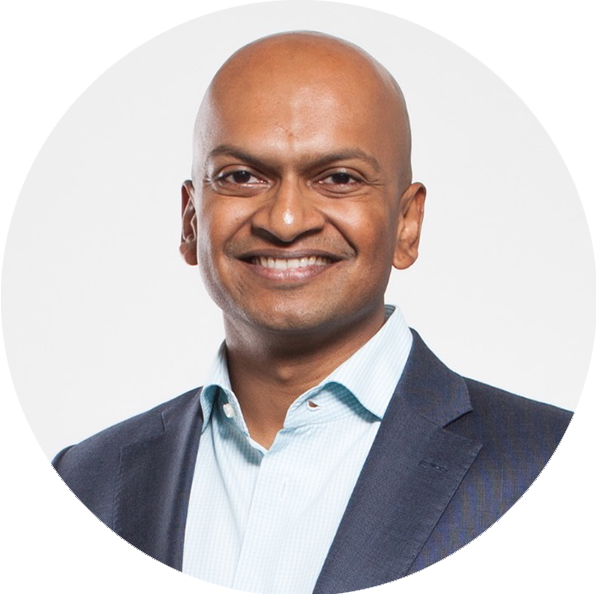Dermatologists Tell Us What They Find Most Challenging About The Aesthetic Industry Right Now

The aesthetic industry has witnessed an unprecedented boom in recent years, with advancements in non-invasive procedures, injectables, and skincare treatments that promise youthful, glowing skin. This surge in demand has positioned dermatologists as the respective experts within this rapidly evolving field, where the boundaries between medical science and beauty are increasingly blurred.
While dermatologists remain the ultimate guardians of skin health, they are now navigating a dual role, one where they must balance the intricate art of treating complex skin conditions with the growing consumer appetite for cosmetic enhancement.
The role of the dermatologist has always been rooted in expertise, diagnosis, and clinical care, but as aesthetic treatments become more mainstream, these specialists are often expected to seamlessly integrate aesthetic goals into their medical practice. For many, this presents unique challenges—not only are they responsible for safeguarding the health of the skin, but they must also manage patient desires driven by external influences, including social media, celebrity culture, and evolving beauty ideals. This convergence of health and aesthetics has raised significant questions about patient safety, ethical responsibility, and the pressure of meeting increasingly lofty expectations.
To better understand the shifting landscape and their perspectives, we sat down with four leading dermatologists from across the country to hear firsthand what they find most challenging about working in the aesthetic industry today. Each of these Dermatologists are Board Members of the Australasian Society of Cosmetic Dermatologists (ASCD).
Dr Aakriti Gupta, Medical Laser & Cosmetic Dermatologist:
“The aesthetic industry has experienced significant growth in recent years, offering patients a variety of advanced treatments to address skin concerns. However, with this rapid evolution comes challenges—both for practitioners and patients.
One of the key challenges is helping patients navigate the overwhelming landscape of available options and managing expectations. Many patients invest considerable time researching treatments, but the wealth of online information can sometimes be misleading or overly simplistic.
‘Before and after’ photos are frequently used to demonstrate the potential of aesthetic treatments, but they don’t tell the whole story. These images cannot capture the full journey required to achieve such results. In many cases, it’s not a single treatment but rather a series of treatments and/or a combination of modalities that delivers optimal outcomes—and this may involve downtime that patients may not initially anticipate. For example, treating acne scars often involves multiple approaches, including dermal fillers, resurfacing lasers, and surgical techniques like subcision. Each of these methods plays a role in the final outcome, and each is associated with recovery time and potential risk, but this complexity isn’t always evident in promotional images.
Additionally, it’s important to recognize that not all treatments are created equal—patients are not always comparing “apples with apples.” Even within the same category of procedures, there can be considerable differences in the technology used, the provider’s experience, and the way treatments are performed. Resurfacing lasers are a good example of this. Lasers vary widely in terms of power, mechanism of action, and capabilities, which can dramatically impact results. Furthermore, the way a laser is used matters—using pre-set or inbuilt settings may achieve more modest results compared to a laser specialist with advanced experience, who can customise treatments and ‘push the envelope’ safely for optimal outcomes.
As a Dermatologist working in the aesthetic industry, part of my role is to help bridge the gap between the information patients gather on their own and the realities of clinical practice, ensuring that each patient’s treatment plan is tailored to their specific needs and goals. This includes setting realistic expectations about both the process and outcomes, to achieve meaningful results.”

Dr Sarah Hannam, Medical & Laser Dermatologist:
“The aesthetic industry for Dermatologists is at an exciting juncture with technological advances and the availability of tools in our armamentarium, to achieve best outcomes for our patients. In addition, patients are becoming increasingly educated and proactive participants in their aesthetic journey.
A challenge in the context of our modern day ‘Information Age,’ with online content at our fingertips constantly, particularly social media, is the blurred lines between information and misinformation, ‘viral trends’ which may be ineffective and unsafe, and the unavoidable ‘algorithm’, which may lead a patient to desire treatments or procedures that may not be appropriate for their individual needs, leading clinicians to face some ethical dilemmas.
Education is paramount and the in-person consultation is as critical as ever for adequate assessment of our patients, both physically and psychologically, with body dysmorphia rates increasing, probably in the setting of social media and unrealistic filters leading to unachievable goals and desires.
More and more Dermatologists are engaging in their own social media presence in an attempt to educate patients and the wider community on available treatments, and to debunk certain misleading claims and trends, but current AHPHRA guidelines do possess some strict limitations in terms of ‘advertising’ which, whilst well-intentioned, prevent the use of certain descriptive words, possibly contributing to (or in the very least not alleviating) patient confusion.
Finally, whilst the ongoing advances in lasers, injectables, and cosmeceuticals are exciting, keeping abreast of technologies available to us, and deciphering what will be most appropriate and effective for the patients in our practice, is a unique challenge of its own, and proactive education, professional development and engaging with colleagues across all facets of this industry is crucial.”

Dr Shobhan Manoharan, Laser and Aesthetic Dermatologist:
“As an Aesthetic Dermatologist in Australia, there are a few key challenges facing the industry and my practice at this juncture.
The recent regulatory changes by AHPRA and the TGA in the field has proven to be a double edged sword. While intended to protect the consumer, maintain patient safety and standardise quality of care, they have also increased the complexity of our interactions with patients.
I am delighted that there is more rigorous oversight required in the field of injectables, with direct involvement and supervision by qualified medical practitioners now mandated. I am also pleased that there is more emphasis on the patient consultation, with more transparency and rigour of consent in the past; cooling-off periods and age-appropriate guidelines also come into this realm of positive changes.
However, there is a burden on the practitioner now to provide some level of mental health assessment or referral, which may not be within their scope of practice. Even though practically this is how many experienced practitioners would have conducted consultations in the past, the formal nature of these assessments may need to be reevaluated to provide more appropriate pathways and to reduce the risk to the practitioner.
The regulations have now also come along with more restrictive advertising laws, which I believe are too prohibitive for genuine Australian practitioners. Even though the intent to reduce deception or promotion of inappropriate services to the consumer may have been the overarching goal, it has now meant that most genuine clinics now struggle to describe the services they provide and they outcomes they may be able to offer transparently. Meanwhile, with the prominence of digital and social media, patients can freely access information, regardless of accuracy, from overseas sites and non-medical professionals, celebrities, vloggers and influencers, including drug-names, treatments, before and after galleries and misinformation. An Australian dermatologist struggles to be able to educate the public on the accuracy of much of this information as we are hamstrung by our advertising guidelines.
Cost is another issue for patients and practitioners alike, and as compliance mechanisms become more complex, cost of sales increase, along with wages in the current market. On the background of a cost-of-living challenge facing the country at the moment, striking the right balance to provide high-quality services at palatable price-points for patients will always be challenging.
These are some of the challenges facing our industry at present, but like always I am confident we will navigate our way through this onto the next phase for best patient outcomes.”

Dr Cara McDonald, Specialist Dermatologist & Cosmetic Injector:
“In my opinion, one of the most difficult things is the abundance of information and misinformation available online and on social media. This is causing consumers to “self-educate” but they don’t know enough to negotiate the quality of the information they are digesting. This leads to “self-diagnosis” and self treatment, whether it be their skincare routine or what aesthetic procedures would be best for them.
The problem is that because of TGA and AHPRA restrictions, medical practitioners are very restricted in their ability to share quality information, particularly with regards to aesthetic procedures. All the information and “education” in the skin/aesthetic space comes mostly from promotional sources or non-medical “experts” and influencers.
I see this play out in consumers seeking out specific treatments and procedures that they believe they want or need, rather than going through a process with expert assessment and care focused on longer term optimal outcomes. We see a lot of problems caused by inappropriate skincare and inappropriate procedures which at best, are frustrating or difficult to fix, and at worst have devastating long term consequences.”
Read our latest issue below:
There are 5 ways you can catch up with SPA+CLINIC
- Our quarterly print magazine, delivered to your door. Subscribe here.
- Our website, which is updated daily with its own completely unique content and breaking news.
- Our weekly newsletter – free to your inbox! Subscribe here.
- Our digital magazine – click here to view previous issues.
- Our social media – see daily updates on our Instagram, Facebook & Linkedin
The post Dermatologists Tell Us What They Find Most Challenging About The Aesthetic Industry Right Now appeared first on SPA+CLINIC.
